Abstract
An entomopathogenic fungus, Entomophaga maimaiga, was found causing an extensive epizootic in outbreak populations of the gypsy moth, Lymantria dispar, throughout many forested and residential areas of the northeastern United States. This is the first recognized occurrence of this or any entomophthoralean fungus in North American gypsy moths, and its appearance was coincident with an abnormally wet spring. Most fungal-infected gypsy moth larvae were killed in mass during the fourth and fifth stadium and were characteristically found clinging to the trunks of trees with their heads pointed downward. The fungus produces thick-walled resistant resting spores within dried gypsy moth cadavers and infectious conidia when freshly killed larvae are held in a wet environment. The morphology and development of the fungus are described. The fungus appears to have had its origin in Japan, and the current epizootic may have resulted from the survival and inapparent spread of an early introduction in 1910-1911.
Full text
PDF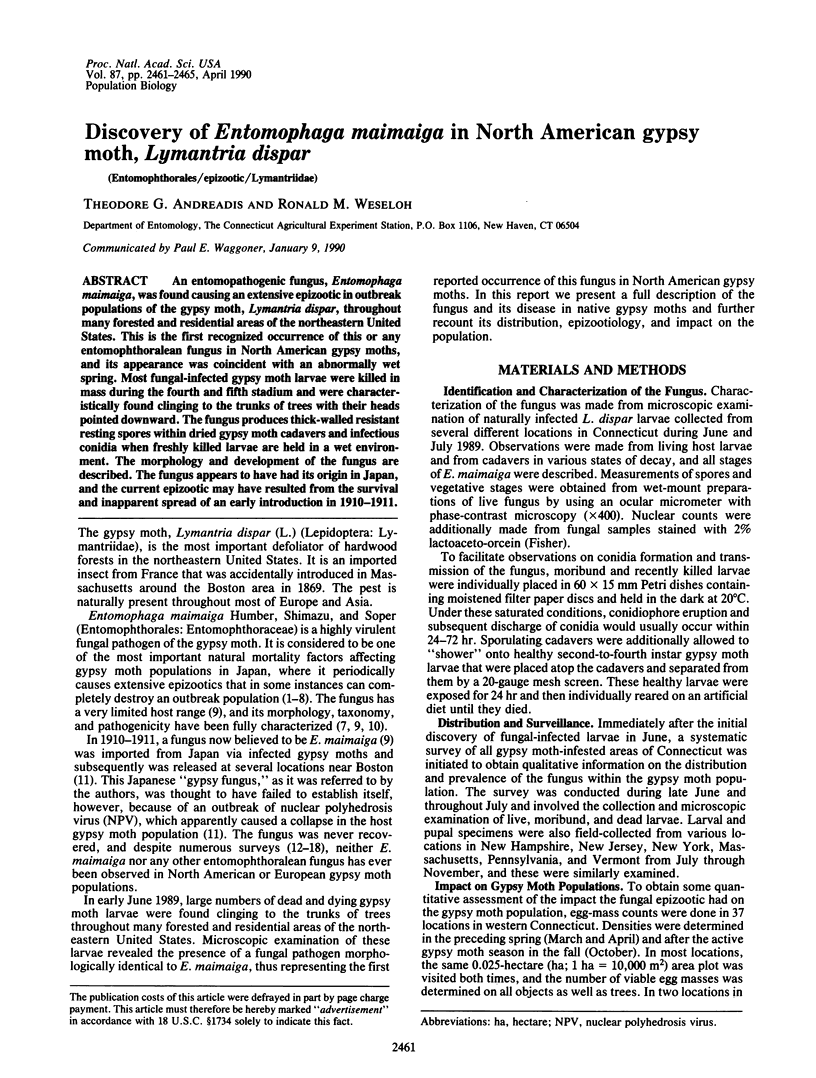
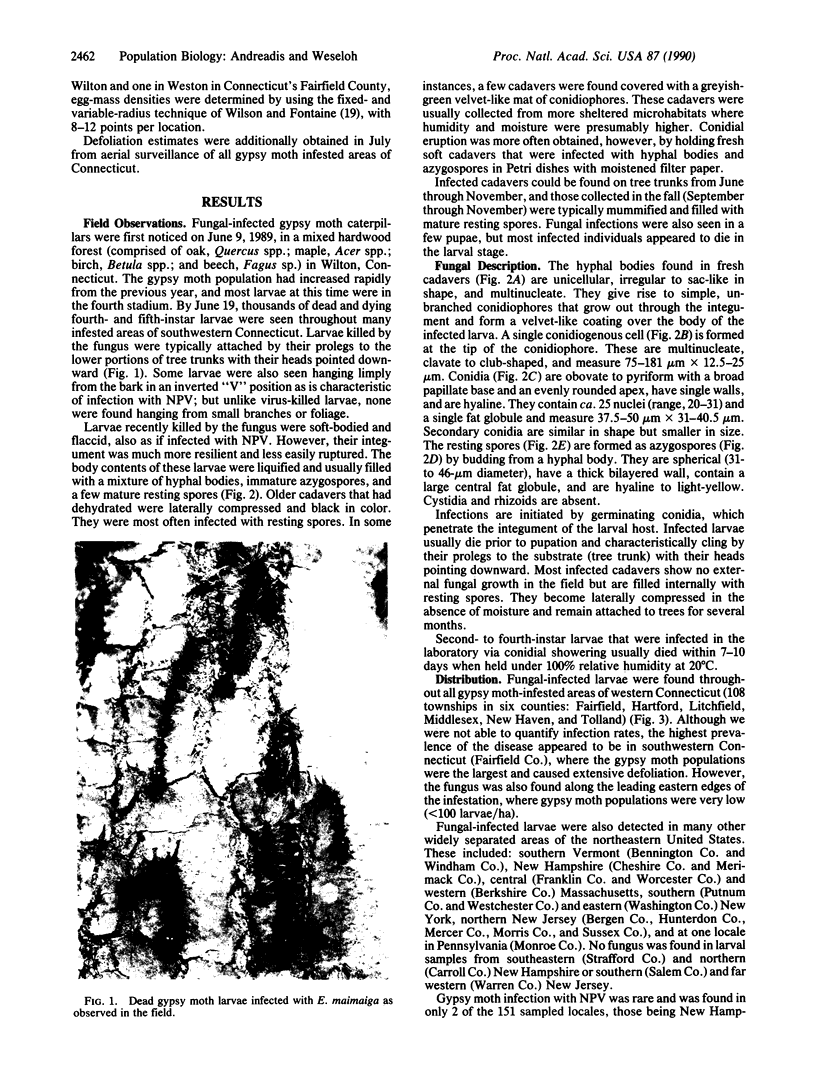
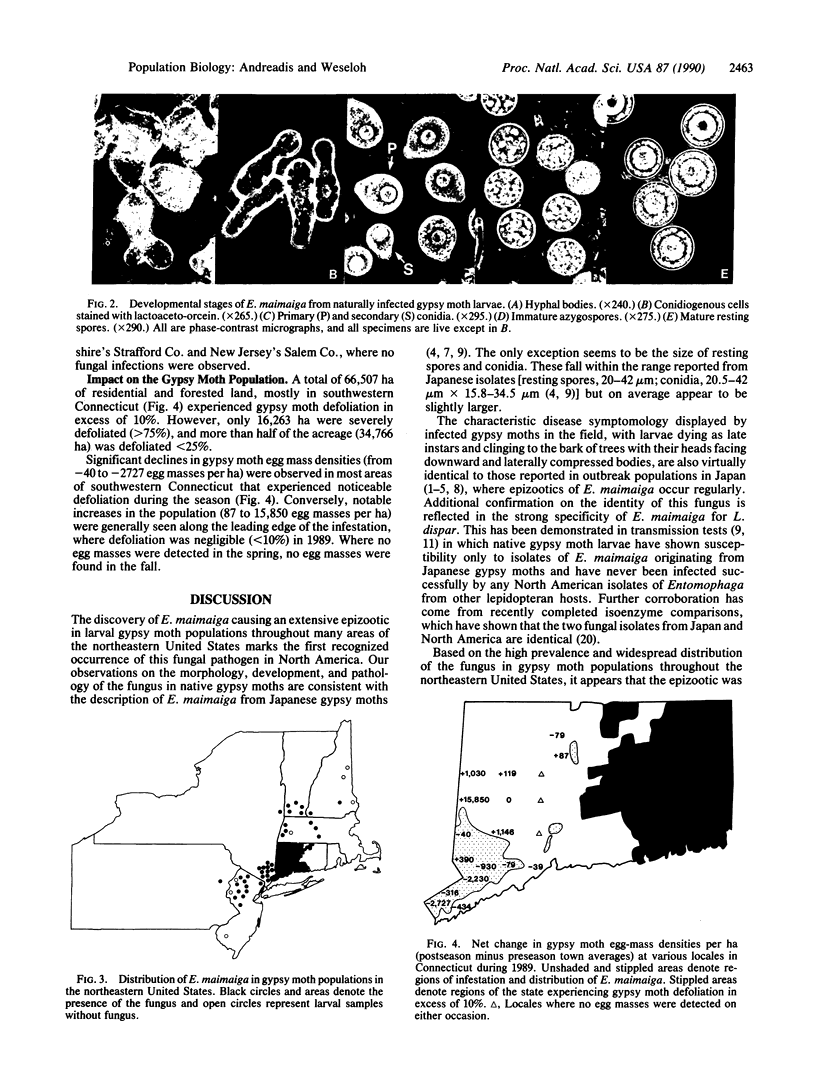
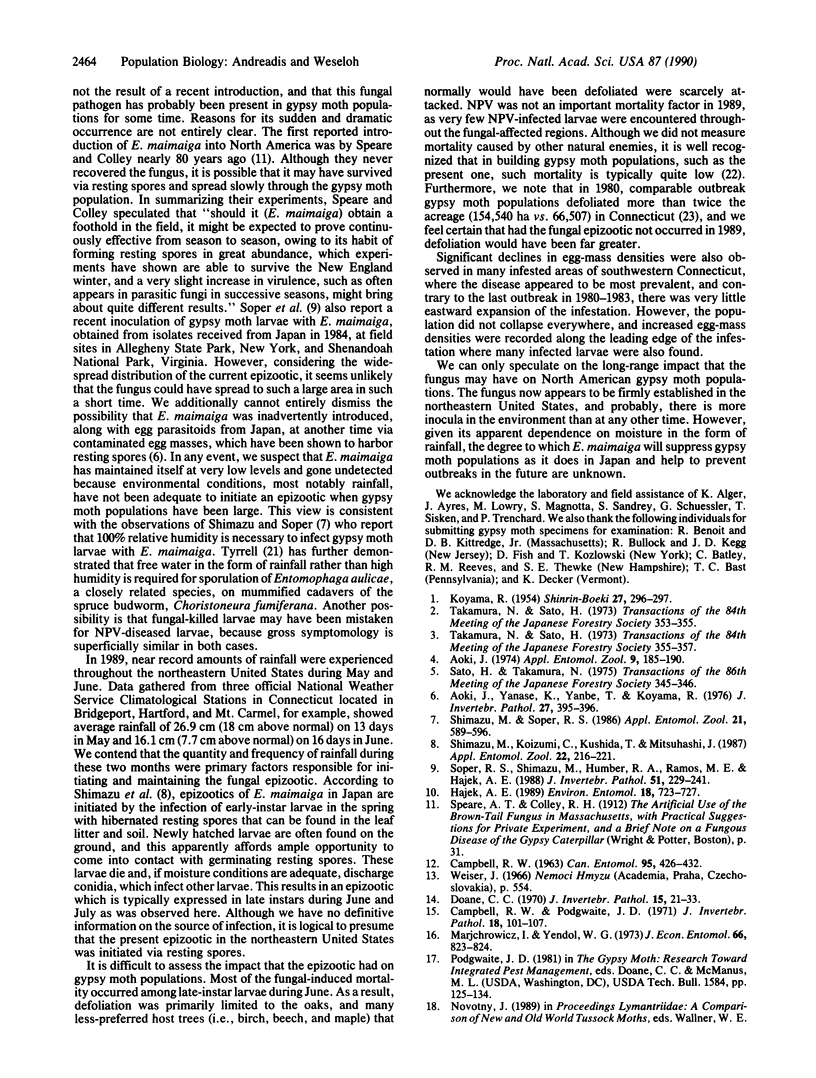
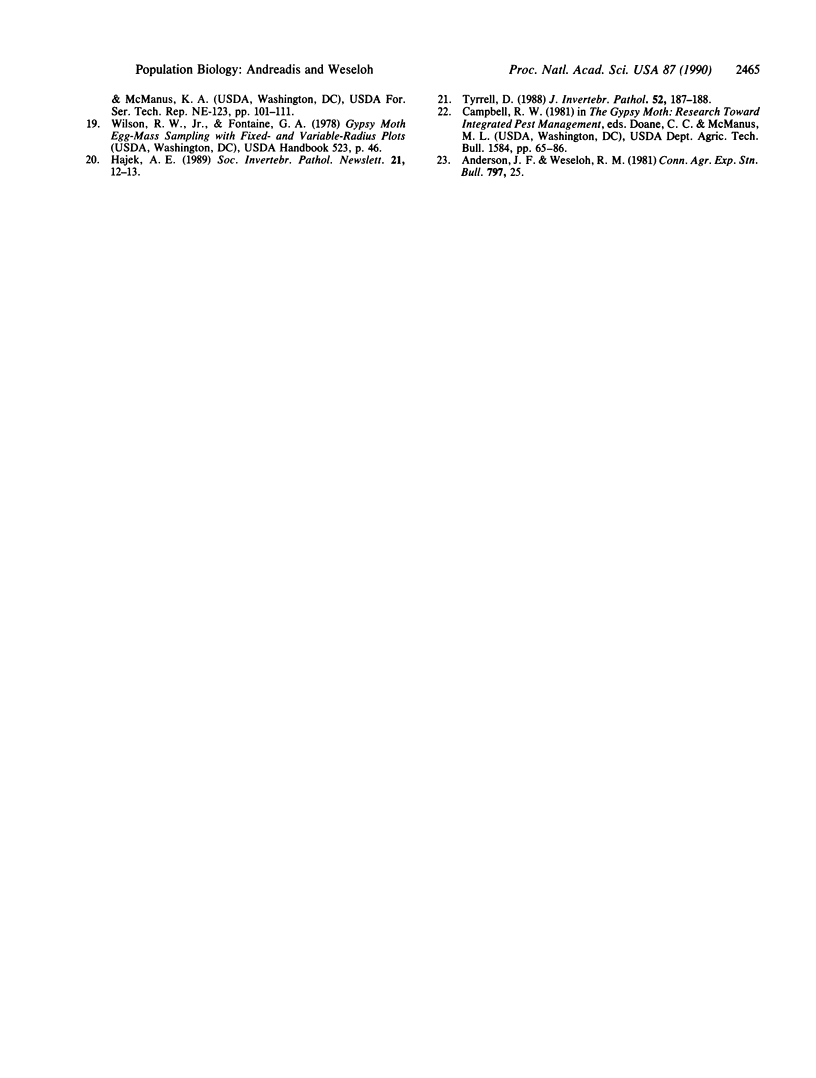
Images in this article
Selected References
These references are in PubMed. This may not be the complete list of references from this article.
- Campbell R. W., Podgwaite J. D. The disease complex of the gypsy moth. I. Major components. J Invertebr Pathol. 1971 Jul;18(1):101–107. doi: 10.1016/0022-2011(91)90015-i. [DOI] [PubMed] [Google Scholar]




